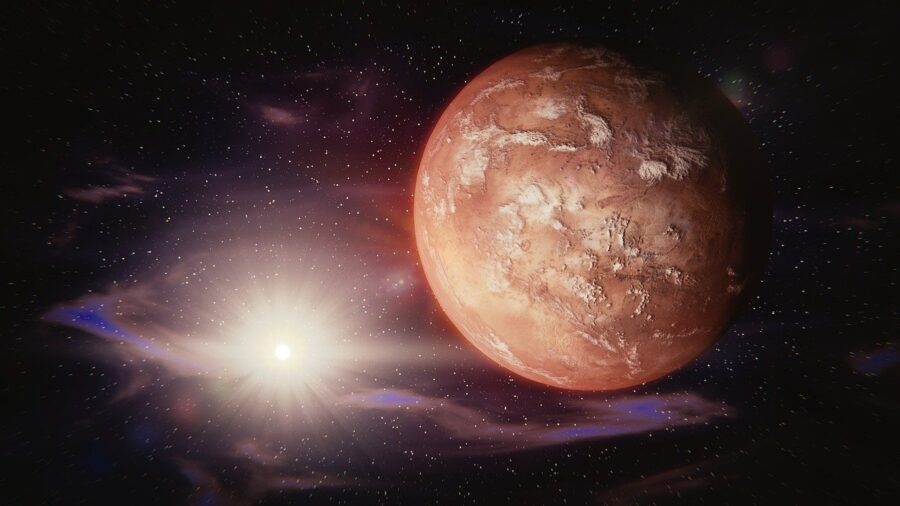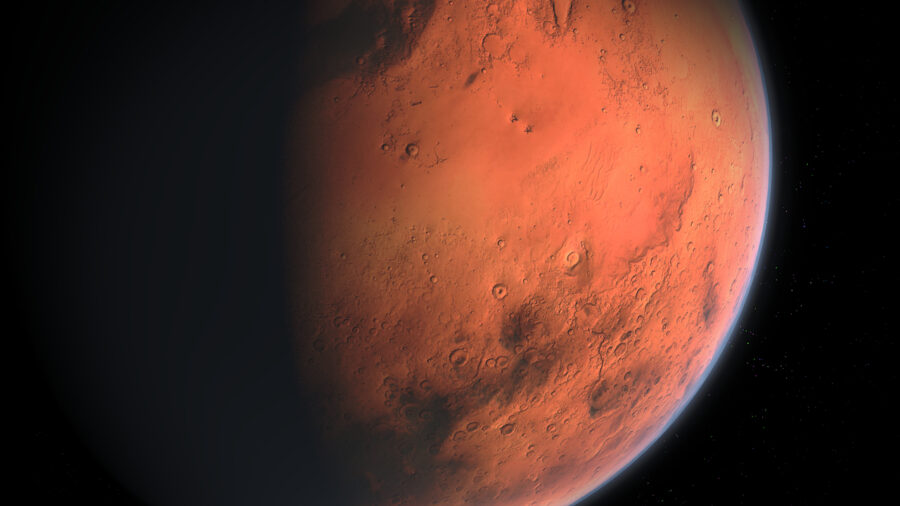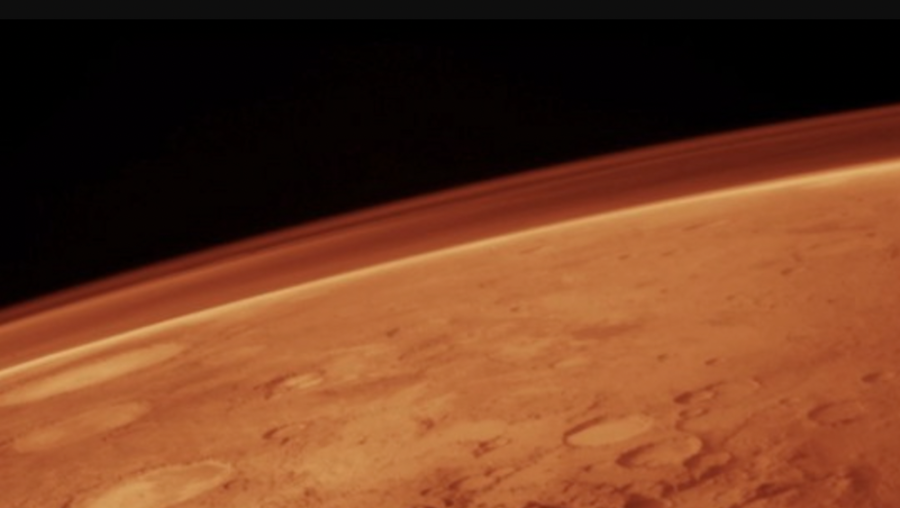Mars Emitting Mysterious Glow, Caught By Satellite

A European Space Agency Trace Gas Orbiter satellite observing Mars saw a mysterious glow on the night side of the red planet (via The Debrief). A research team at the Atmospheric Physics (LPAP) at the University of Liege has previously detected a green light emission coming from the planet during the day, but this night glow was attributed to something else.
Atoms And CO2 Making Light?

What the researchers found could provide us with some interesting information about how Martian seasons work.
The previously detected Mars glow during the day had been observed to be CO2 molecules being dissociated by ultraviolet solar radiation.
However, the night luminosity was found to be a recombination of oxygen atoms generated in the summer atmosphere that are transported by winds to high winter latitudes.
Once the atoms reach elevation, they reunite with CO2 molecules, and the oxygen molecule enters a state that emits visible light.
Planet’s Atmopshere

The discovery of the night Mars glow was made when the researchers adjusted the UVIS-NOMAD instrument on the satellite to scan the edge of the planet’s atmosphere, which unveiled the concentrated light emissions for the polar regions.
The researchers who discovered this luminosity indicated that the findings will be invaluable for teaching us more about Mars’ upper atmosphere and the changes it goes through during the year.
Other Reasons For Mars Glow

Along with the new night glow on Mars, the team also discovered a glow in the ultraviolet light spectrum that wasn’t attributed to oxygen.
This particular glow is believed to be due to nitric oxide molecules, though more research will be needed to determine what processes are leading to this unique light emission.
In any case, the team hopes that future missions to the red planet will have cameras that capture images of the light, giving us some additional information to observe.
Polar Nights On Mars

Interestingly, the Mars glow is intense and bright enough that future astronauts may have a visual feast during polar nights on the Martian ground or in orbit.
Sightseeing on another planet is undoubtedly already an exciting prospect, but it would be even better if you’re getting a light show while you’re there.
It’s certainly a cool finding, and it will be interesting to see what else the research team can learn about these emissions as the satellite continues to gather data.
European Space Agency

While the European Space Agency is busy observing Mars and its atmosphere, NASA is also busy learning more about the red planet.
Currently, the space agency has several Mars-related missions going on, not the least of which is using the Perseverance rover to collect samples that will be sent back to Earth for observation.
Undoubtedly, those samples will lead to us understanding a lot more about the planet as well.
NASA Manned Missions

Of course, one of the most exciting plans for Mars is when NASA plans to send a manned mission to the planet as early as the 2030s.
It remains to be seen if humanity can stick to that timeline, but it’s amazing that the possibility isn’t too far off. In the meantime, it will be interesting to learn more about the planet, such as why it glows.










